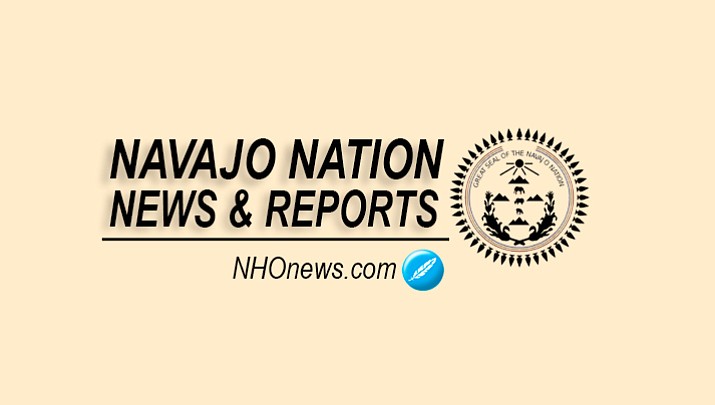U.S. and Navajo Nation agree to cleanup 94 abandoned uranium mines
WASHINGTON — The United States and the Navajo Nation have entered into a settlement agreement, with two affiliated subsidiaries of Freeport-McMoRan, Inc., for the cleanup of 94 abandoned uranium mines on the Navajo Nation.
“We appreciate the efforts of mining companies like Freeport that are coming forth to clean up the uranium contamination that they have caused on the Navajo Nation,” said Navajo Nation President Russell Begaye. “Freeport has committed to clean up more mines than that which will be addressed in the TRONOX lawsuit. The Navajo Nation will work very closely with Freeport to make sure that the cleanup is done properly.”
Under the settlement, which is valued at over $600 million, Cyprus Amax Minerals Co. and Western Nuclear, Inc., will perform the work and the United States will contribute approximately half the cost. The settlement terms are outlined in a proposed consent decree filed Jan.17 in federal court in Phoenix, Arizona. With the settlement, money is not committed to begin the cleanup process at over 200 abandoned mines on the Navajo Nation, according to a press release from the Department of Justice.
The work to be conducted is subject to oversight of the U.S. Environmental Protection Agency (EPA), in collaboration with the Navajo Nation Environmental Protection Agency.
“This remarkable settlement will result in significant environmental restoration on Navajo lands and will help build a healthier future for the Navajo people,” said Assistant Attorney General John C. Cruden for the Justice Department’s Environment and Natural Resources Division. “We appreciate the extraordinary commitment by Freeport’s affiliated subsidiaries to clean up 94 mines, and to achieve this settlement without litigation. The Justice Department is always ready to work cooperatively with the Navajo Nation and responsible private parties to address the legacy of uranium mining on Navajo lands.”
According to the Navajo Nation Office of the President and Vice President, the settlement, when combined with prior settlements addressing Kerr-McGee mines and orphan mines (those where there are no longer any viable responsible parties), will result in cleanup taking place at over one quarter of the 523 abandoned uranium mines on the Navajo Nation. In addition, under one of the orphan mine settlements, initial site investigations will begin at 30 more abandoned uranium mines, expanding at least the beginning of the cleanup process to more than one third of all the abandoned uranium mines.
Acting Regional Administrator Alexis Strauss for the EPA Pacific Southwest said the historic settlement will cleanup almost 20 percent of the abandoned mines on the Navajo Nation.
“Cleaning up the uranium contamination continues to be a top environmental priority for our Regional office,” he said.
The abandoned mines are a legacy of Cold War efforts to develop nuclear power and weapons, followed by mining to support commercial nuclear power. Many companies mined uranium on Navajo Nation land, beginning in 1944 at the federal government’s initiative and lasting until 1986, when the last uranium mine was shut down. Radioactive waste piles containing overburden, waste rock and low-grade uranium ore left over from mining activities remain at the mine sites. Many Navajo people worked in and near the mines and many still live and work near the mine sites.
Many private entities, including Cyprus Amax (a successor-in-interest to Vanadium Corporation of America and Climax Uranium Company) and Western Nuclear, mined approximately thirty million tons of uranium ore on or near the Navajo Nation between 1944 and 1986.
The federal government, through the Atomic Energy Commission (AEC), was the sole purchaser of uranium until 1966, when commercial sales of uranium began. The AEC continued to purchase ore until 1970. The last uranium mine on the Navajo Nation shut down in 1986.
Further, EPA’s cleanup efforts have generated over 100 jobs for Navajo citizens and work for several Navajo owned businesses, according to the Department of Justice. The settlement announced today includes 10 priority mines and is expected to create many jobs for Navajo workers.
“It is important that Freeport uses Navajo employees and that they contract with Navajo businesses. We encourage them to use the point system that is being used by the U.S. EPA in utilizing Navajo workers and businesses,” Begaye said. “This ensures that Navajo companies will utilize higher educational institutions like the Navajo Technical University, University of New Mexico, San Juan Community College and other educational institutions to gain essential training and licensing for Navajo businesses.”
The settlement agreement resolves the claims of the United States on behalf of EPA against Cyprus Amax and Western Nuclear; of the Navajo Nation against the United States, and against Cyprus Amax and Western Nuclear; and of Cyprus Amax and Western Nuclear against the United States.
Cyprus Amax and Western Nuclear agree to perform removal site evaluations, engineering evaluations and cost analyses, and cleanups at the 94 mines. In return for that commitment, the United States, on behalf of the Department of the Interior and the Department of Energy, agrees to place $335 million into a trust account to help fund the cleanup.
In April 2014, the Justice Department and EPA announced in a separate matter that approximately $985 million of a multi-billion dollar settlement of litigation against subsidiaries of Anadarko Petroleum Corp. will be paid to EPA to fund the clean-up of approximately 50 abandoned uranium mines in and around the Navajo Nation, where radioactive waste remains from Kerr-McGee mining operations.
EPA commenced field work with the proceeds from this settlement last year. In addition, the United States previously entered into two settlement agreements with the Navajo Nation to fund cleanups at 16 priority mines and investigations at an additional 30 mines for which no viable responsible private party has been identified.
The proposed consent decree, lodged in the U.S. District Court for the District of Arizona, is subject to a 30-day public comment period and approval by the federal court. Information about submitting a public comment is available at: www.justice.gov/enrd/consent-decrees.
SUBMIT FEEDBACK
Click Below to:




